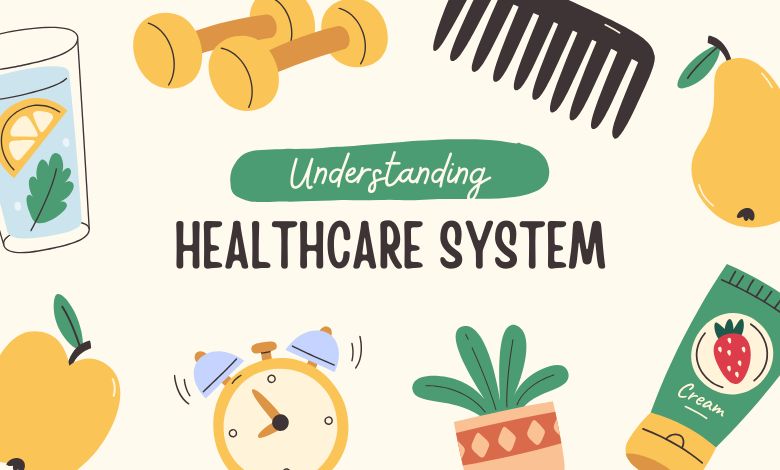Understanding the U.S. Healthcare System: A 2025 Overview

The U.S. healthcare system remains one of the most complex and debated institutions in the world. As of 2025, it continues to evolve under the influence of policy reforms, technology advancements, demographic shifts, and economic pressures. To understand where healthcare in America stands today, it’s essential to examine its structure, key players, ongoing challenges, and recent changes that are shaping the future of care.
1. Structure of the U.S. Healthcare System
Unlike many developed nations with centralized, government-run health systems, the United States operates a mixed healthcare model. It is primarily composed of:
- Private healthcare providers and insurers: Most Americans receive care from private entities and are covered by private insurance, often through employer-sponsored plans.
- Public programs: Government-funded programs like Medicare, Medicaid, Children’s Health Insurance Program (CHIP), and Veterans Affairs (VA) cover specific populations.
- Out-of-pocket payments: Individuals without insurance or with high deductibles may pay directly for services.
This hybrid system leads to a fragmented care landscape, where access, cost, and quality can vary widely depending on insurance status, income, and geography.
2. Key Components and Stakeholders
- Healthcare Providers: Hospitals, physicians, urgent care clinics, and specialists deliver direct care.
- Insurance Companies: Private insurers like UnitedHealthcare, Blue Cross Blue Shield, and government programs play a critical role in covering costs.
- Pharmaceutical and Medical Device Companies: These organizations develop drugs, treatments, and technologies.
- Regulators and Policymakers: Agencies such as the Centers for Medicare & Medicaid Services (CMS) and the U.S. Department of Health and Human Services (HHS) set and enforce health policy standards.
3. Health Insurance in 2025
Health insurance remains the gateway to care for most Americans. As of 2025:
- Approximately 92% of Americans have health coverage, thanks to expanded Medicaid in more states, subsidies under the Affordable Care Act (ACA), and increased enrollment in marketplace plans.
- Employer-sponsored insurance remains the largest source of coverage.
- Medicare Advantage plans, offered by private insurers and covering Medicare beneficiaries, have grown significantly.
- Some states have introduced or proposed public option plans to increase affordability and competition.
However, underinsurance—where people have coverage but face high out-of-pocket costs—continues to affect millions.
4. Cost of Care
The U.S. continues to have the highest per capita healthcare spending in the world, with an average annual cost of over $13,000 per person. Factors contributing to high costs include:
- Administrative complexity
- High prices for medical services, drugs, and devices
- A fee-for-service model that incentivizes quantity over quality
- Chronic disease prevalence
Despite high spending, outcomes like life expectancy and maternal health still lag behind those of other high-income countries.
5. Quality and Access
There have been strides in improving quality and access through value-based care initiatives, technology, and preventive programs. However, disparities persist:
- Rural and underserved urban areas still face provider shortages.
- Racial and socioeconomic disparities affect outcomes, especially for Black, Hispanic, and Native American populations.
- Mental health services, while expanding, remain underfunded and inaccessible for many.
6. Telehealth and Technology in 2025
Telehealth has become a permanent part of the care landscape since the COVID-19 pandemic. In 2025:
- Virtual visits now make up around 25% of all primary care consultations.
- Remote patient monitoring tools are used widely for chronic disease management.
- Artificial intelligence (AI) supports diagnostics, administrative efficiency, and personalized medicine.
Digital health has improved convenience and access, particularly for rural and mobility-limited patients, though digital literacy and internet access remain barriers.
7. Policy and Reform Efforts
In recent years, healthcare policy has focused on:
- Lowering prescription drug prices, including Medicare negotiations with manufacturers.
- Expanding Medicaid in the remaining non-expansion states.
- Addressing mental health and addiction with increased funding.
- Continuing support for value-based care models that reward better outcomes over volume of services.
There is ongoing debate about the future of broader reforms, such as “Medicare for All” or a national public option, but major structural changes have yet to be enacted.
8. Challenges Ahead
Despite progress, the U.S. healthcare system faces several long-term challenges:
- Aging population driving up demand for care and long-term services.
- Workforce shortages, especially in primary care and nursing.
- Rising rates of chronic diseases like diabetes and heart disease.
- Ensuring equitable access and outcomes across different populations.
Conclusion
The U.S. healthcare system in 2025 is a dynamic and evolving entity marked by innovation, inequality, and complexity. While millions have access to advanced medical care, affordability and equity remain pressing concerns. As policymakers, providers, and patients continue to seek solutions, understanding the current landscape is the first step toward meaningful improvement.
Whether you’re a consumer navigating your health insurance options, a professional in the field, or a policymaker shaping the system’s future, staying informed is essential in the quest for better health outcomes for all Americans.



